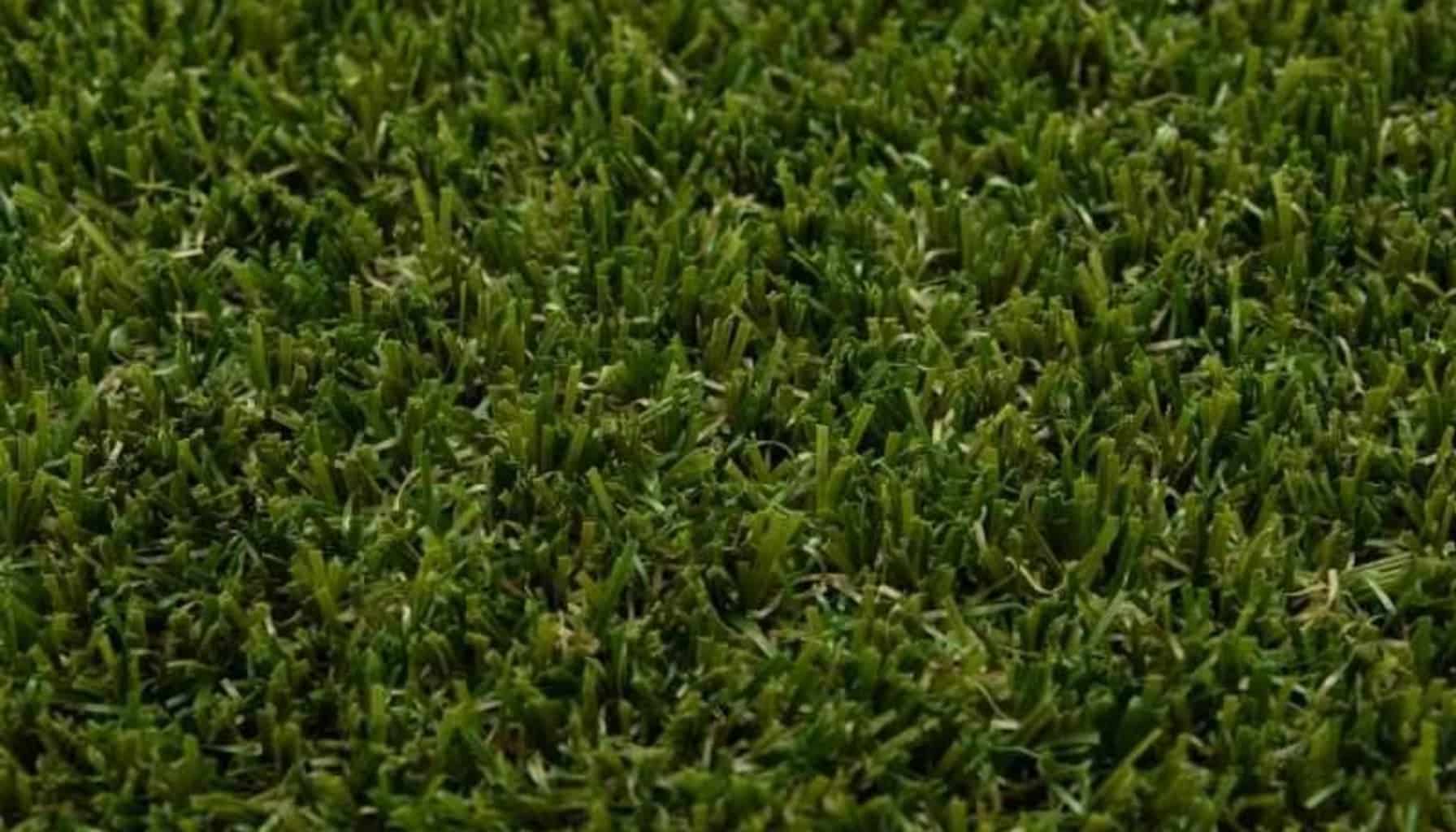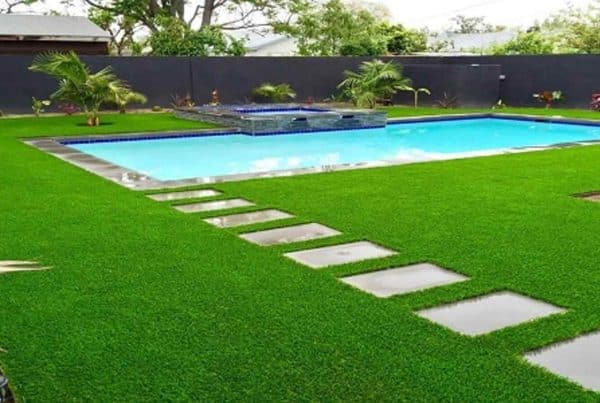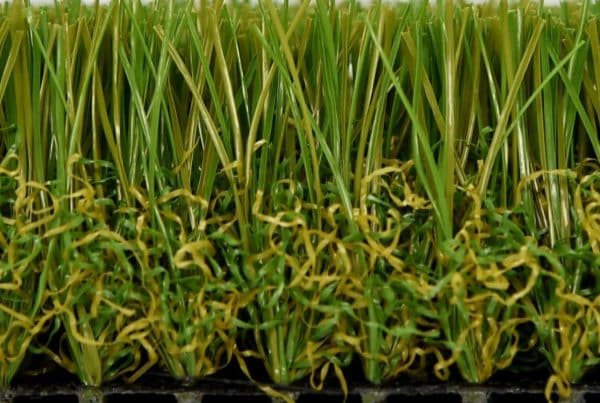At Unreal Lawns & Courts, we’ve witnessed a growing trend in New Zealand: the shift towards artificial turf NZ for residential and commercial landscapes.
As water scarcity becomes a pressing issue, Kiwis are seeking sustainable alternatives to traditional lawns. Artificial turf offers a solution that not only conserves water but also provides numerous benefits for property owners and the environment.
In this post, we’ll explore why artificial turf NZ is rapidly becoming the future of Kiwi lawns and outdoor spaces.
The Water-Saving Revolution of Artificial Turf NZ
New Zealand’s Growing Water Scarcity
Water resources in New Zealand face increasing pressure. Climate change, population growth, and agricultural demands strain our water supplies. Regions like Canterbury and Otago experience serious water scarcity concerns. This situation prompts many Kiwis to seek water-efficient landscaping solutions.
Artificial turf presents a compelling answer to this challenge. Unlike natural lawns that require regular watering, synthetic grass eliminates the need for irrigation. This water-saving potential becomes significant, especially during dry summer months when water restrictions prevail in many parts of New Zealand.
Water Consumption: Natural vs. Artificial Lawns
The Thirst of Natural Lawns
Natural lawns consume substantial amounts of water. Try to water your lawns in the early morning, before 10am. Give your lawn longer, but less frequent watering. Don’t give your lawn short frequent waterings.
Artificial Turf’s Water Efficiency
Artificial turf, in contrast, requires no regular watering. The only water needed serves occasional cleaning purposes, using a fraction of what natural lawns consume. Beyond water conservation, synthetic turf offers additional environmental advantages. It eliminates the need for harmful pesticides and fertilisers.
Long-Term Environmental Impact
The water-saving benefits of artificial turf NZ extend beyond individual properties. As more New Zealanders adopt this solution, the cumulative effect on water conservation could prove substantial. This holds particular importance in drought-prone areas where every drop counts.
Moreover, reducing water demand for lawns can alleviate pressure on municipal water supplies. This, in turn, can lead to lower water treatment and distribution costs for local councils.
The initial cost of artificial turf may exceed that of natural grass, but the long-term water savings often offset this investment. Many property owners report significant reductions in their water bills after installation.
As we consider the environmental benefits of artificial turf NZ, it’s important to also examine its performance and maintenance requirements. The next section will explore how artificial turf stands up to daily use and weather conditions, and the time and cost savings it offers compared to traditional lawns.
How Artificial Turf NZ Performs
Time and Cost Efficiency
Artificial turf transforms lawn maintenance, offering a high-performance alternative to natural grass. The New Zealand Gardener magazine estimates that the average Kiwi dedicates about 40 hours annually to lawn care. Artificial turf reduces this time. While the initial installation cost may seem high, long-term savings on mowing equipment, fuel, fertilisers, and water bills offset this expense.
Well-maintained artificial grass can last up to 15-20 years, significantly longer than lower-quality options. Commercial properties often experience even more substantial savings.
Weather Resilience
New Zealand’s diverse climate challenges natural lawns. Artificial turf NZ, however, remains unaffected by weather extremes. It doesn’t brown during droughts or turn muddy after heavy rains. The Landscape Industries Association of New Zealand reports that quality artificial turf withstands temperature fluctuations from -50°C to 110°C without degradation.
During wet seasons, artificial turf’s superior drainage capabilities prevent waterlogging. Most modern synthetic grass systems drain water at rates exceeding 300mm per hour (far surpassing natural turf’s capacity).
Durability in High-Traffic Areas
For frequently used areas, synthetic turf proves exceptionally durable. The New Zealand Recreation Association notes that synthetic sports fields endure up to 3,000 hours of play annually, compared to natural turf’s limit of about 300-350 hours.
This resilience extends to residential settings. Children’s play areas, pet zones, and backyard entertainment spaces maintain their appearance and functionality regardless of usage intensity. Quality artificial turf fibres spring back after compression, ensuring a consistent look and feel.
Environmental Considerations
Artificial turf’s performance extends beyond its physical attributes. It eliminates the need for harmful pesticides and fertilisers, contributing to a healthier local ecosystem. The reduction in mowing also decreases carbon emissions from lawn care equipment.
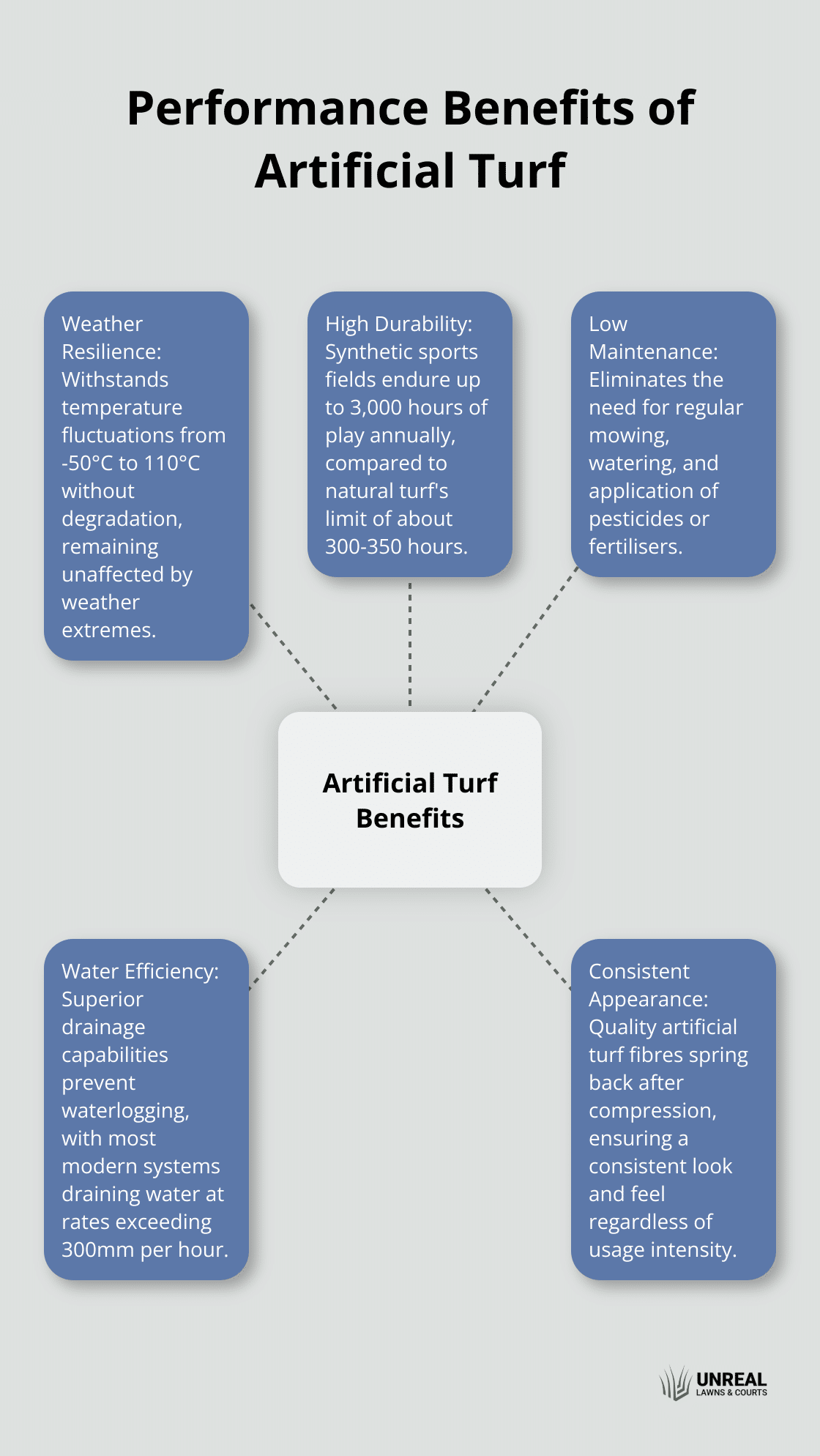
However, it’s important to consider the full lifecycle of artificial turf. While it offers many benefits, the environmental impact of production and disposal requires careful consideration. Innovations in recycling and sustainable materials continue to improve the overall environmental profile of artificial turf NZ.
As we examine the broader environmental implications of artificial turf, it becomes clear that this modern landscaping solution offers multiple benefits beyond water conservation for both residential and commercial applications.
Beyond Water Savings: The Environmental Impact of Artificial Turf NZ
Synthetic turf offers environmental benefits that extend far beyond water conservation. Kiwi homeowners and businesses increasingly recognise the broader ecological impact of their landscaping choices.
Chemical-Free
One of the most significant advantages of artificial turf is the elimination of pesticides and fertilisers. Natural lawns often require regular applications of these chemicals to maintain their appearance and health. Runoff from these chemicals pollutes groundwater and local waterways. They also disrupt soil health and the biodiversity of organisms living in the soil.
Carbon Footprint Reduction
Traditional lawn maintenance often involves gas-powered equipment, contributing to carbon emissions. It’s estimated that lawn mowers and other garden equipment account for approximately 5% of the country’s total emissions from the transport sector. Artificial turf eliminates the need for regular mowing, thus reducing these emissions significantly.
A University of California study found that maintaining a natural lawn for 20 years produces greenhouse gas emissions equivalent to flying from Auckland to London three times. In contrast, switching to artificial grass can contribute to the reduction of carbon emissions. Along with these benefits, artificial grass poses some environmental considerations as well.
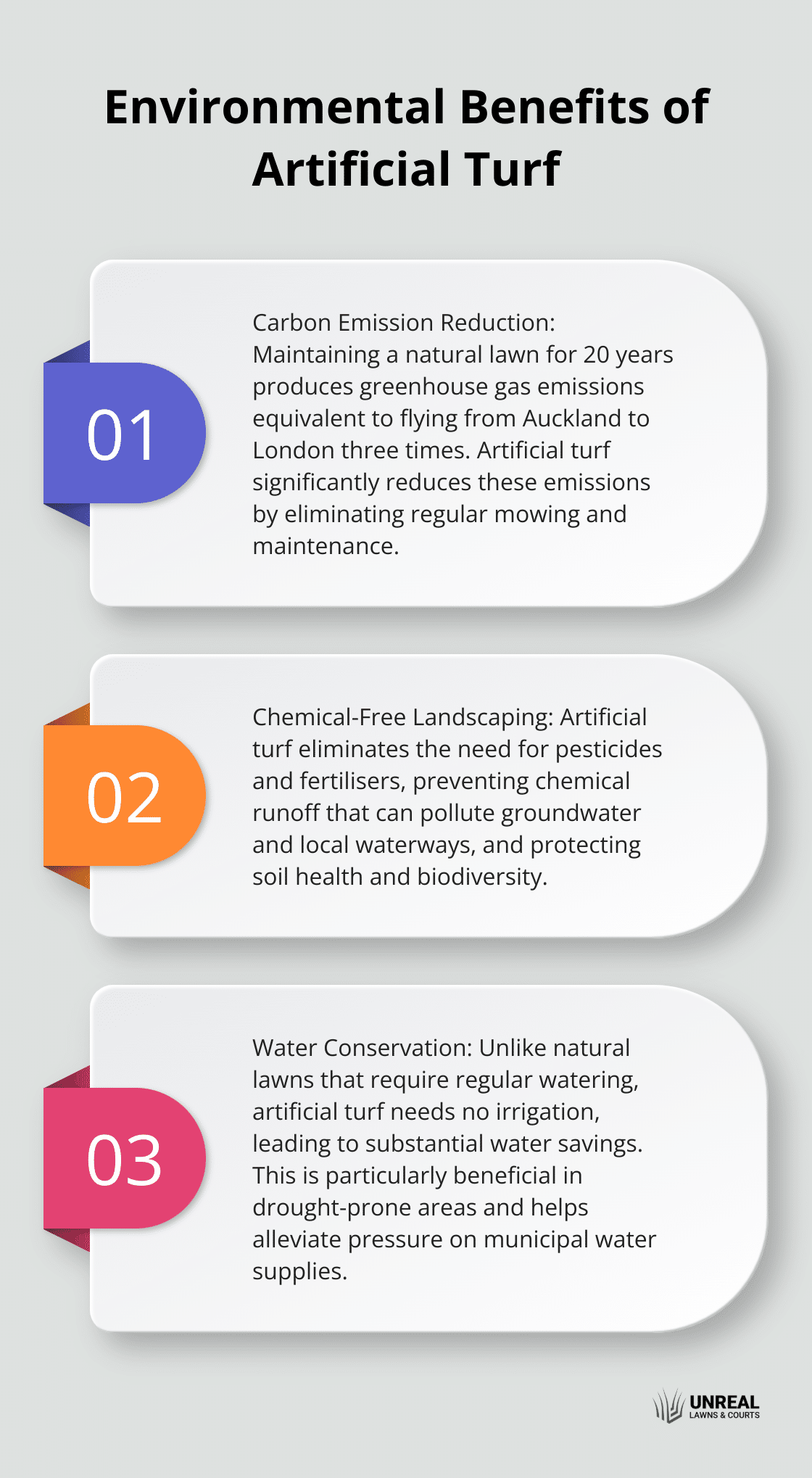
Final Thoughts
Artificial turf NZ represents a transformative solution for Kiwi homes and businesses seeking sustainable, low-maintenance landscaping options. The benefits of synthetic grass extend far beyond water conservation, contributing to healthier local ecosystems by eliminating chemical treatments and reducing carbon emissions from lawn care equipment. Its durability in high-traffic areas and resilience to diverse weather conditions make it an ideal choice for both residential and commercial spaces.
The long-term savings in time, water, and maintenance costs make artificial turf an economically sound decision, despite the higher initial investment. Innovations in recycling and sustainable materials continue to improve the overall environmental profile of synthetic grass (including end-of-life solutions). As Kiwis prioritise sustainable living, artificial turf offers a practical way to create beautiful, functional outdoor spaces that align with these values.
We at Unreal Lawns & Courts encourage property owners to consider artificial turf as part of their landscaping strategy. Our synthetic turf solutions provide a versatile option that combines aesthetics with environmental responsibility. The future of Kiwi lawns promises more sustainability, practicality, and beauty than ever before.

